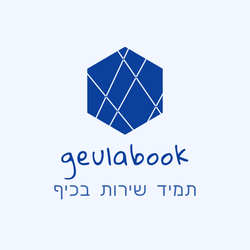Torah with Rashi's commentary is the most well-known of the various printed editions of the Torah. A commentary on the Torah was written by Rabbi Shlomo Yitzchaki known as Rashi in the 11th century CE, and as an integral part of his overall commentary on the entire Tanach (Jewish Bible). About two-thirds of Rashi's commentary LeMikra (מקרא) is based on the Gemara and midrashi of Sages, and his main work was in filtering out things that fit the simplicity of the Bible or that add necessary additions, and the purpose of this commentary is to understand the Torah's simplicity.
Rabbi Shlomo Yitzchaki studied at Lothir's first Yeshiva "Sages of Lothir" which was founded by Rabbi Gershom of Or the Gola, and was headed after him by Rabbi Jacob Bar Yakar, who was Rashi's outstanding rabbi. Rashi read the old teachers, and wherever his rabbi mentioned it, he meant Rabbi Bar Yakar. After the death of Rabbi Yaakov Bar Yakar in 1064, he studied with Rabbi Yitzchak Bar Yehuda, and then he studied with Rabbi Yitzchak Halevi In Worms and with the other Lothir's sages.
In connection with Rashi's commentary on the Torah and Nach (prophies and scriptures) there are several manuscript copies (obviously incomplete) of Rashi's commentary on the Torah from the 13th century, and by the way, the first known printing of Rashi's commentary on the Torah was in Rome, In 1470. The first Hebrew book in which the year of printing, the place of printing and the name of the printer are indicated in the commentary, is Rashi's commentary on the Torah printed in 1475 (1475), in Reggio di Calabria, also in Italy. In this version, Rashi's commentary was printed in the Jewish-Spanish eloquent script, in order to distinguish it from the body of the biblical text which was printed in square Hebrew letters. Two pages from this type are in the Chabad library in New York. In this case, this script is referred to as the "Rashi script", but in practice it is the cursive script that was used in Spain in the Middle Ages.
Method of Rashi's Commentary Contrary to the Ramban and Rabbi Avraham Ibn Ezra, Rashi did not write a preface to his commentary, in which he would explain his interpretive approach, but rather a comment that clarifies the line that guided him in his commentaries appears incidentally only at the beginning of the book of Bereshit (Genesis): "There are many legend sermons And our rabbis have already settled on their place in Bereshit Rabba and other midrashes, and I did not come but to the plainness of the Bible and the legend that reconciles the words of the Tanach's to a bee in its own way. This means, it is not Rashi's business to bring legends and midrashim in his interpretation, but to solve difficulties that arise in the verses. While Rashi was quoting the words of the Midrash, according to his testimony, he believed that the difficulty of the verse led him to deviate from the path of simplicity and brevity. This is the way in which the study method of Rashi commentators such as Nechama Leibovitch is built, to try to investigate and deeply understand Rashi's interpretation while To go down to the depth of each and every word in its interpretation.
All that remains is to add a list of Rashi's enormous contribution to the development of Judaism: and Jewish literature in particular:

